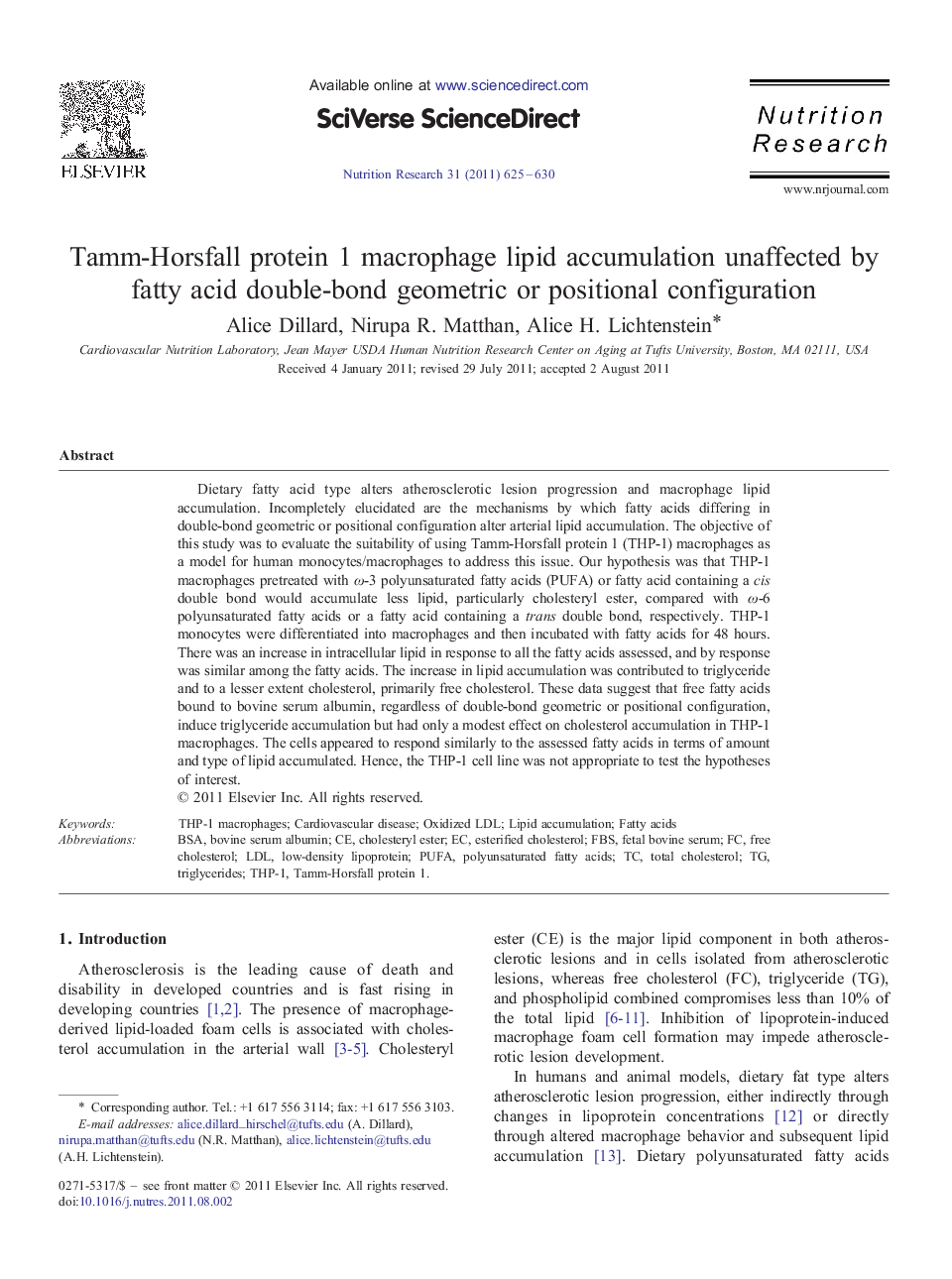| Article ID | Journal | Published Year | Pages | File Type |
|---|---|---|---|---|
| 5904658 | Nutrition Research | 2011 | 6 Pages |
Abstract
Dietary fatty acid type alters atherosclerotic lesion progression and macrophage lipid accumulation. Incompletely elucidated are the mechanisms by which fatty acids differing in double-bond geometric or positional configuration alter arterial lipid accumulation. The objective of this study was to evaluate the suitability of using Tamm-Horsfall protein 1 (THP-1) macrophages as a model for human monocytes/macrophages to address this issue. Our hypothesis was that THP-1 macrophages pretreated with Ï-3 polyunsaturated fatty acids (PUFA) or fatty acid containing a cis double bond would accumulate less lipid, particularly cholesteryl ester, compared with Ï-6 polyunsaturated fatty acids or a fatty acid containing a trans double bond, respectively. THP-1 monocytes were differentiated into macrophages and then incubated with fatty acids for 48 hours. There was an increase in intracellular lipid in response to all the fatty acids assessed, and by response was similar among the fatty acids. The increase in lipid accumulation was contributed to triglyceride and to a lesser extent cholesterol, primarily free cholesterol. These data suggest that free fatty acids bound to bovine serum albumin, regardless of double-bond geometric or positional configuration, induce triglyceride accumulation but had only a modest effect on cholesterol accumulation in THP-1 macrophages. The cells appeared to respond similarly to the assessed fatty acids in terms of amount and type of lipid accumulated. Hence, the THP-1 cell line was not appropriate to test the hypotheses of interest.
Keywords
Related Topics
Life Sciences
Biochemistry, Genetics and Molecular Biology
Endocrinology
Authors
Alice Dillard, Nirupa R. Matthan, Alice H. Lichtenstein,
